Fyno APNs (Apple Push Notification services) SDK
Fyno iOS SDK
Fyno's iOS Push Notification SDK offers a comprehensive set of notification features within your app. It's designed to efficiently deliver messages, ensuring optimal performance and user experience.
Prerequisites
In order to get started, there are a few prerequisites that needs to be in place:
- Fyno account: A valid Fyno workspace with at least one active API Key. For more info, refer Workspace Docs.
- Configuration: Configure your Fyno Push provider in Fyno App.
- Swift iOS application: A working Swift iOS application in which you want to integrate the SDK.
- Apple developer account: Required details are mentioned in APNs Docs.
SDK Setup to enable Push Notifications
Step 1: Install the SDK
Add pod 'fyno-push-ios', '~> 1.1' similar to the following to your Podfile:
target 'MyApp' do
pod 'fyno-push-ios', '~> 1.1'
end
Then run a pod install inside your terminal to download and install the fyno push sdk for iOS.
Step 2: Add Required Capabilities
- Inside Targets select signing and capabilities.
- Click on +capabilities and add Push Notifications and Background Modes capabilities to your application.
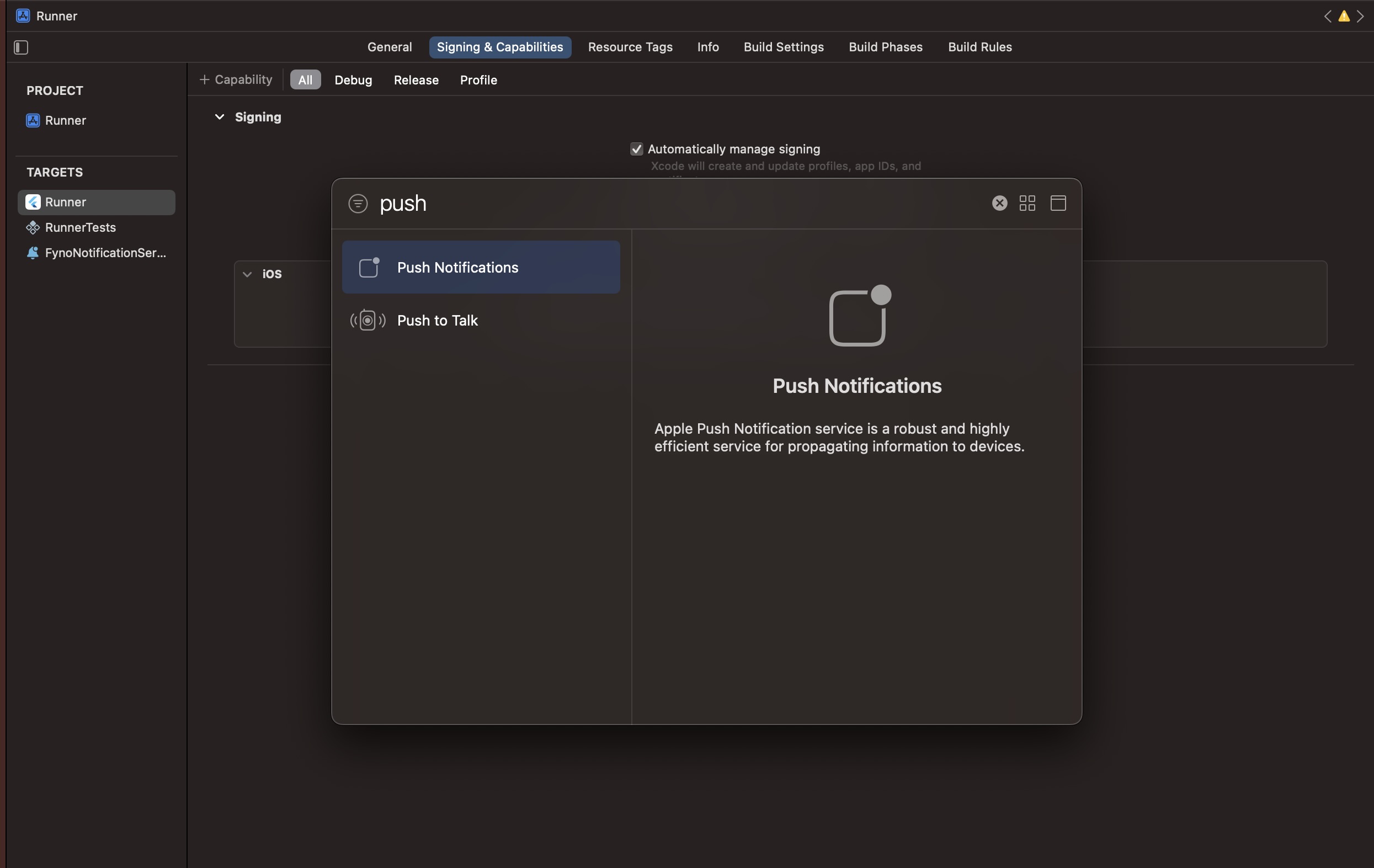
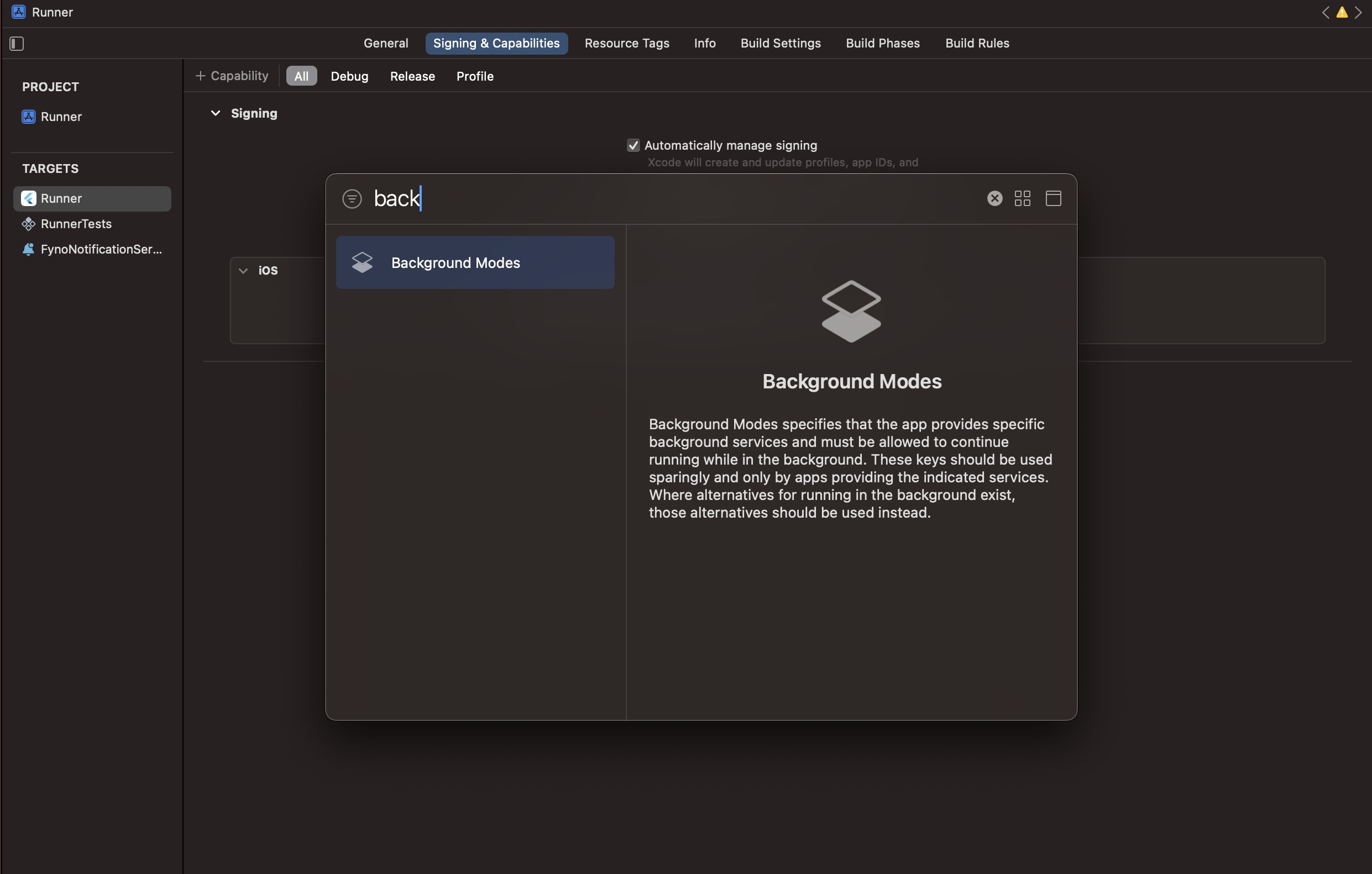
- In Background Modes, select Remote Notifications option. We use background notifications to receive delivery reports when your app is in quit and background state. Refer doc to know more about background notifications.
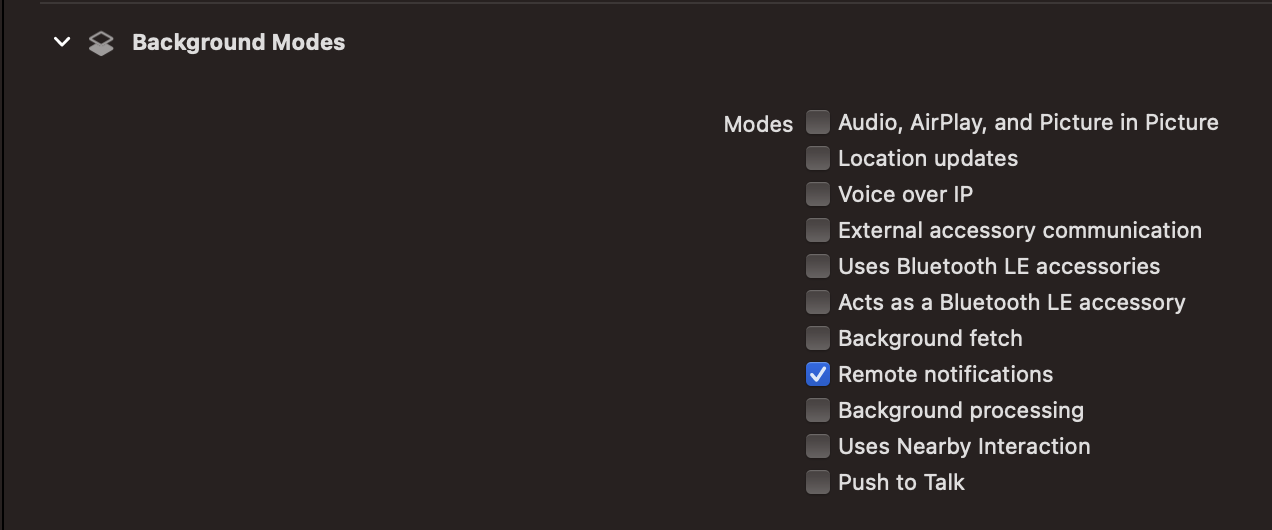
Step 3: Add Notification Service Extension to your application
- In Xcode go to File > New > Target.
- Select
Notification Service Extensionfrom the template list. - Then in Next popup give it any product name, select your team, select swift language and click finish.

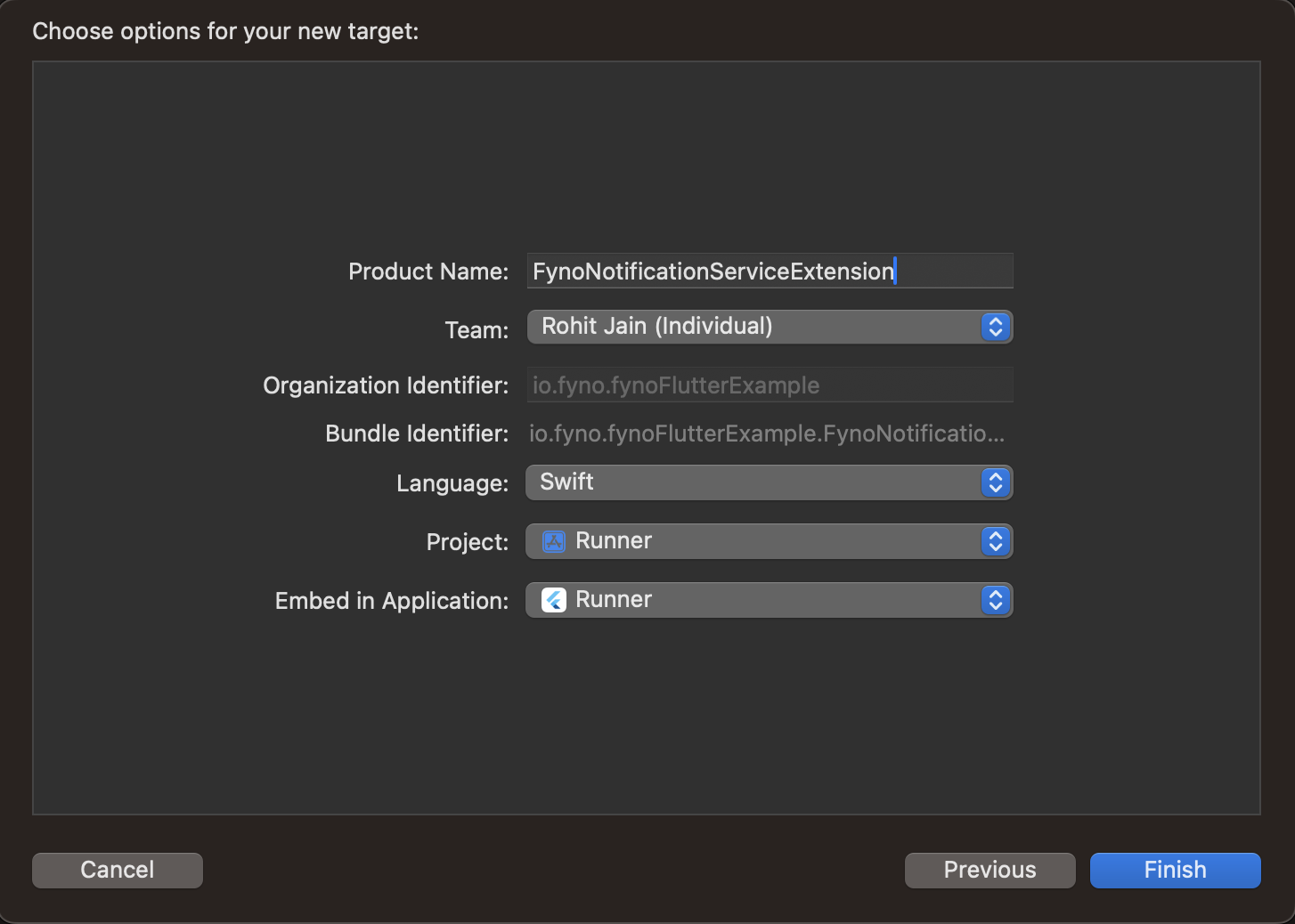
- After clicking on "Finish", a folder will be created with your given product name. Replace the contents of the NotificationService.swift file with the below code.
import UserNotifications
import UIKit
import fyno
class NotificationService: UNNotificationServiceExtension {
var contentHandler: ((UNNotificationContent) -> Void)?
var bestAttemptContent: UNMutableNotificationContent?
override func didReceive(_ request: UNNotificationRequest, withContentHandler contentHandler: @escaping (UNNotificationContent) -> Void) {
fyno.app.handleDidReceive(request, withContentHandler: contentHandler)
}
override func serviceExtensionTimeWillExpire() {
if let contentHandler = contentHandler, let bestAttemptContent = bestAttemptContent {
contentHandler(bestAttemptContent)
}
}
}
- In order for the Notification Service Extension to be able to access the fyno SDK, you will have to import it by following the below steps:
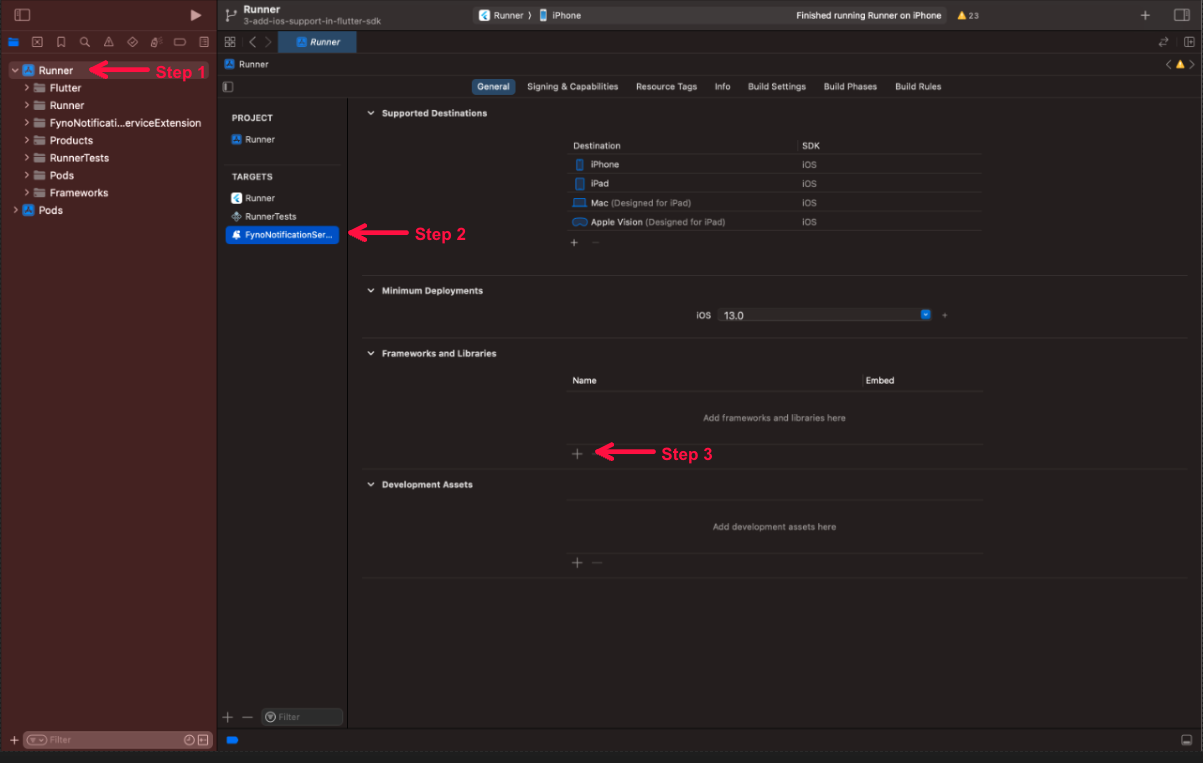
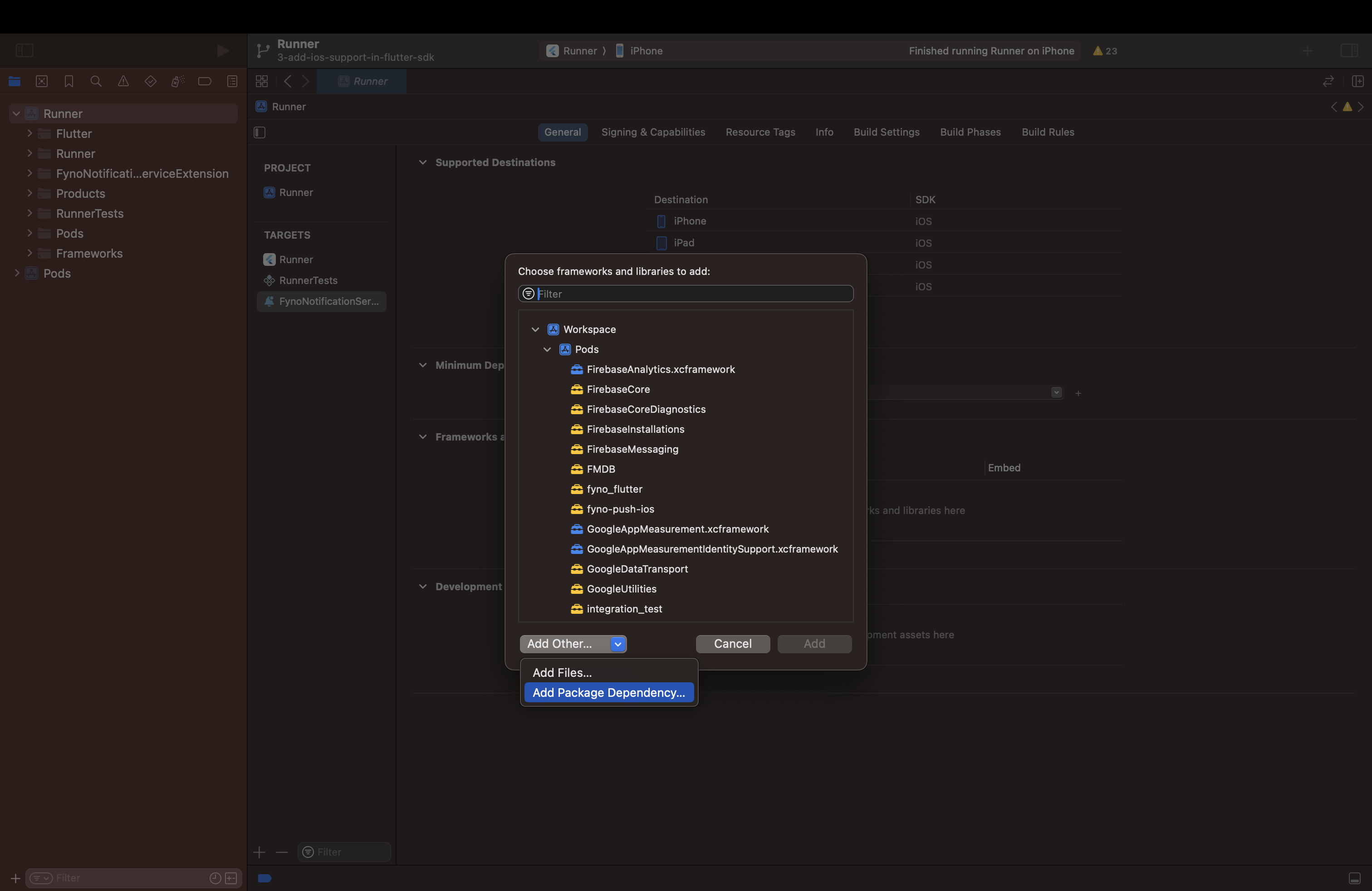
Search for https://github.com/fynoio/ios-sdk in the text box. Select and add the package named ios-sdk.

Select the Target as the Notification Service Extension you had created and click on Add Package.
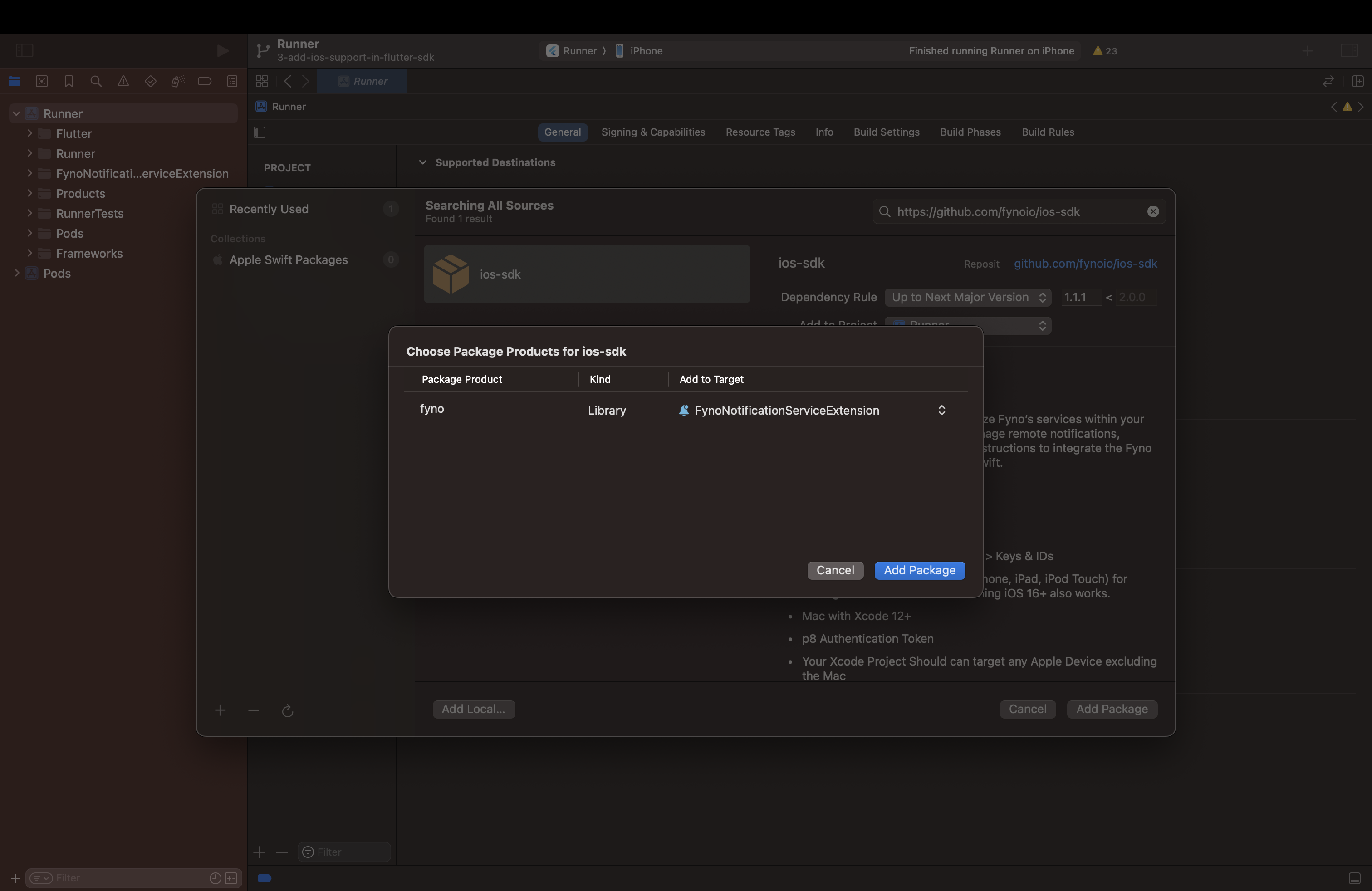
If you face any build issues similar to
Error (Xcode): Cycle inside Runner; building could produce unreliable resultsafter adding the notification service extension, follow this answer to resolve it.
Step 4: Register for push notification in AppDelegate.swift file
- Add the below code in your AppDelegate.swift file.
// without FCM
import Foundation
import UIKit
import fyno_push_ios
class AppDelegate: UIResponder, UIApplicationDelegate, UNUserNotificationCenterDelegate {
let fynosdk = fyno.app
func application(_ application: UIApplication, didFinishLaunchingWithOptions launchOptions: [UIApplication.LaunchOptionsKey: Any]?) -> Bool {
UNUserNotificationCenter.current().delegate = fynosdk
self.fynosdk.registerForRemoteNotifications()
fynosdk.requestNotificationAuthorization{ _ in}
return true
}
func application(_ application: UIApplication, didFailToRegisterForRemoteNotificationsWithError error: Error) {
print("Failed to register for remote notifications: \(error.localizedDescription)")
}
func application(_ application: UIApplication, didRegisterForRemoteNotificationsWithDeviceToken deviceToken: Data) {
// Send the device token to fynoServer
fynosdk.setdeviceToken(deviceToken: deviceToken)
}
}
// with FCM
import Foundation
import UIKit
import fyno_push_ios
// imports required for FCM integration
import FirebaseCore
import FirebaseMessaging
class AppDelegate: UIResponder, UIApplicationDelegate, UNUserNotificationCenterDelegate {
let fynosdk = fyno.app
func application(_ application: UIApplication, didFinishLaunchingWithOptions launchOptions: [UIApplication.LaunchOptionsKey: Any]?) -> Bool {
UNUserNotificationCenter.current().delegate = fynosdk
self.fynosdk.registerForRemoteNotifications()
FirebaseApp.configure() // add only if FCM has been integrated
fynosdk.requestNotificationAuthorization{ _ in}
return true
}
func application(_ application: UIApplication, didFailToRegisterForRemoteNotificationsWithError error: Error) {
print("Failed to register for remote notifications: \(error.localizedDescription)")
}
func application(_ application: UIApplication, didRegisterForRemoteNotificationsWithDeviceToken deviceToken: Data) {
// Send the device token to fynoServer
fynosdk.setdeviceToken(deviceToken: deviceToken)
Messaging.messaging().apnsToken = deviceToken // add only if FCM has been integrated
}
}
You have successfully configured the iOS SDK for receiving push notifications.
Usage
Initialising the SDK (should be called on app launch)
- Workspace ID(Mandatory) - Fyno's unique workspace ID, which you will see at the top of the Workspace Settings page.
- Integration ID(Mandatory) - The ID of the integration created in Fyno Integrations.
- Distinct ID(Optional) - Unique identifier for your user (An uuid is automatically generated if no value is passed).
- Version(Optional) - Indicates the environment in which the user has to be created. Could be either test or live. (Default value is "live").
fyno.app.initializeApp(
workspaceID: workspaceId,
integrationID: integrationID,
distinctId: distinctID,
version: version
){
initResult in
switch initResult {
case .success(_):
print("Initialization successful")
case .failure(let error):
print(error)
}
}
Identifying the User (should be called when you want to update previously created distinct ID or user name)
- Distinct ID(Mandatory) - The distinct ID you want to identify the user with.
- User Name(Optional) - The name you want to assign to the user.
fyno.app.identify(newDistinctId: distinctID, userName: userName) { identifyResult in
switch identifyResult{
case .success(_):
print("Identify successful")
case .failure(let error):
print(error)
}
}
Registering Push Notifications with APNs or Google FCM
- isAPNs(Mandatory) - Use true if APNs is configured, false if Google FCM is configured in the integration.
fyno.app.registerPush(isAPNs: isAPNs){
registerPushResult in
switch registerPushResult{
case .success(_):
print("registerPush successful")
case .failure(let error):
print(error)
}
}
Merging User Profiles
- Old Distinct ID(Mandatory).
- New Distinct ID(Mandatory).
fyno.app.mergeProfile(newDistinctId:newDistinctId){
mergeResult in
switch mergeResult{
case .success(_):
print("mergeProfile successful")
case .failure(let error):
print(error)
}
}
Updating Message Status
- Callback URL(Mandatory) - You can get the Callback URL from the notification additional payload if the notification was triggered from Fyno.
- Status(Mandatory) - The status of the notification (one of RECEIVED, CLICKED or DISMISSED).
fyno.app.updateStatus(callbackUrl: callbackUrl, status: status){
updateStatusResult in
switch updateStatusResult{
case .success(_):
print("updateStatus successful")
case .failure(let error):
print(error)
}
}
Resetting User Information (You can call this function when user logs out from your application)
fyno.app.resetUser() {
resetUserResult in
switch resetUserResult{
case .success(_):
print("resetUser successful")
case .failure(let error):
print(error)
}
}
Updated 10 months ago
